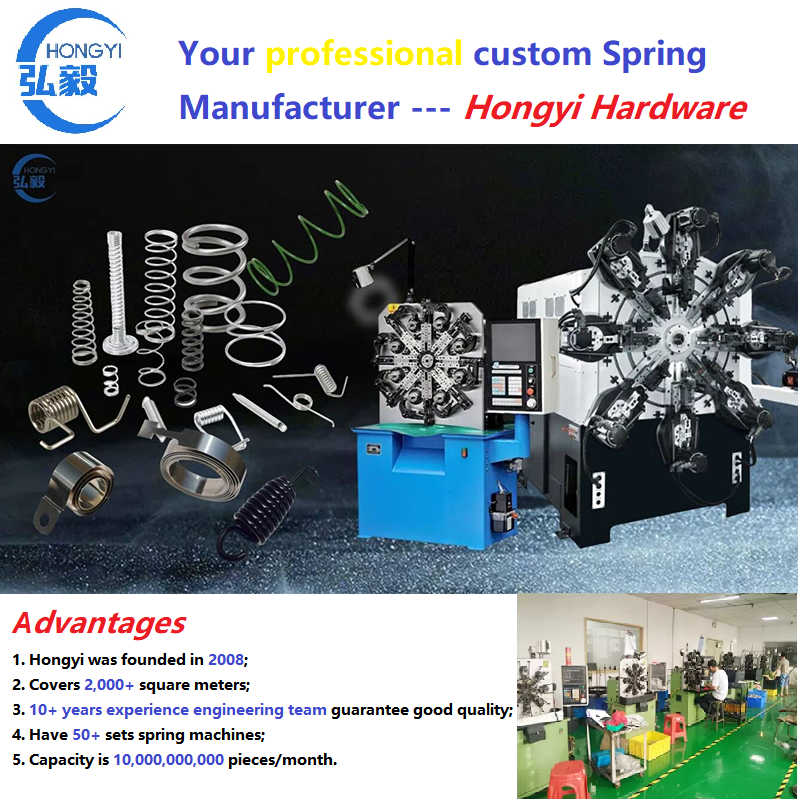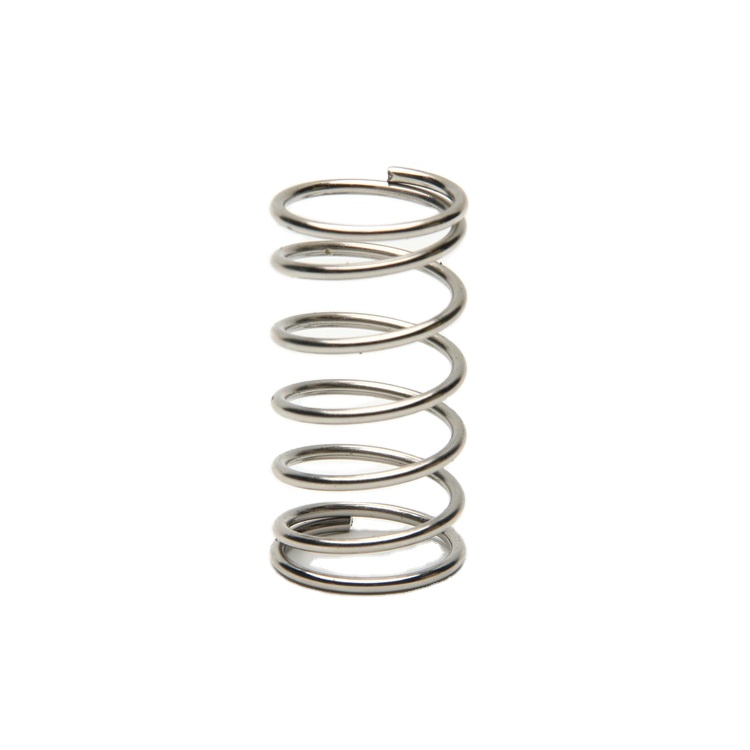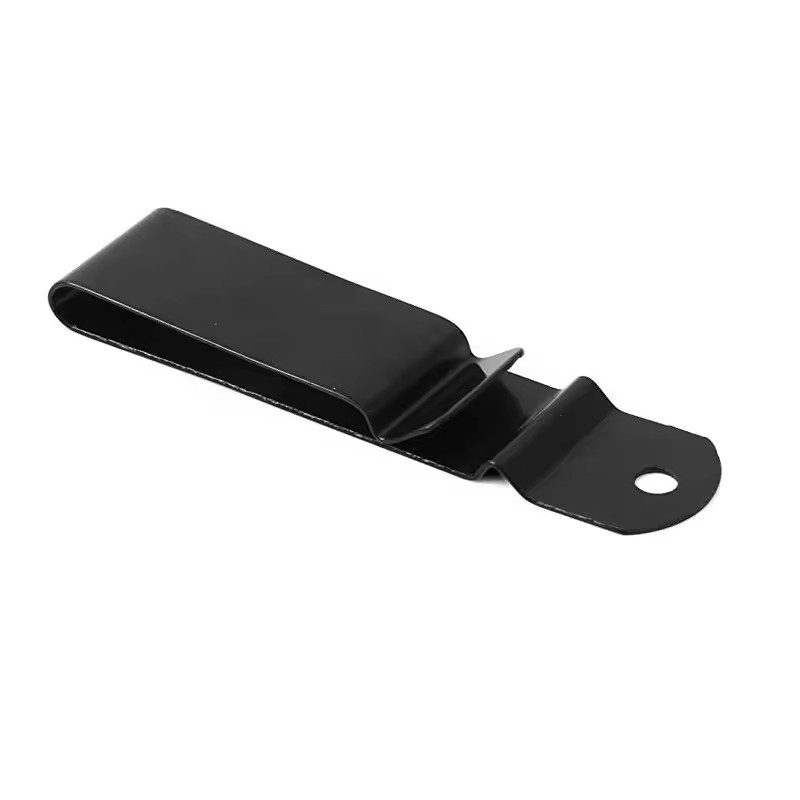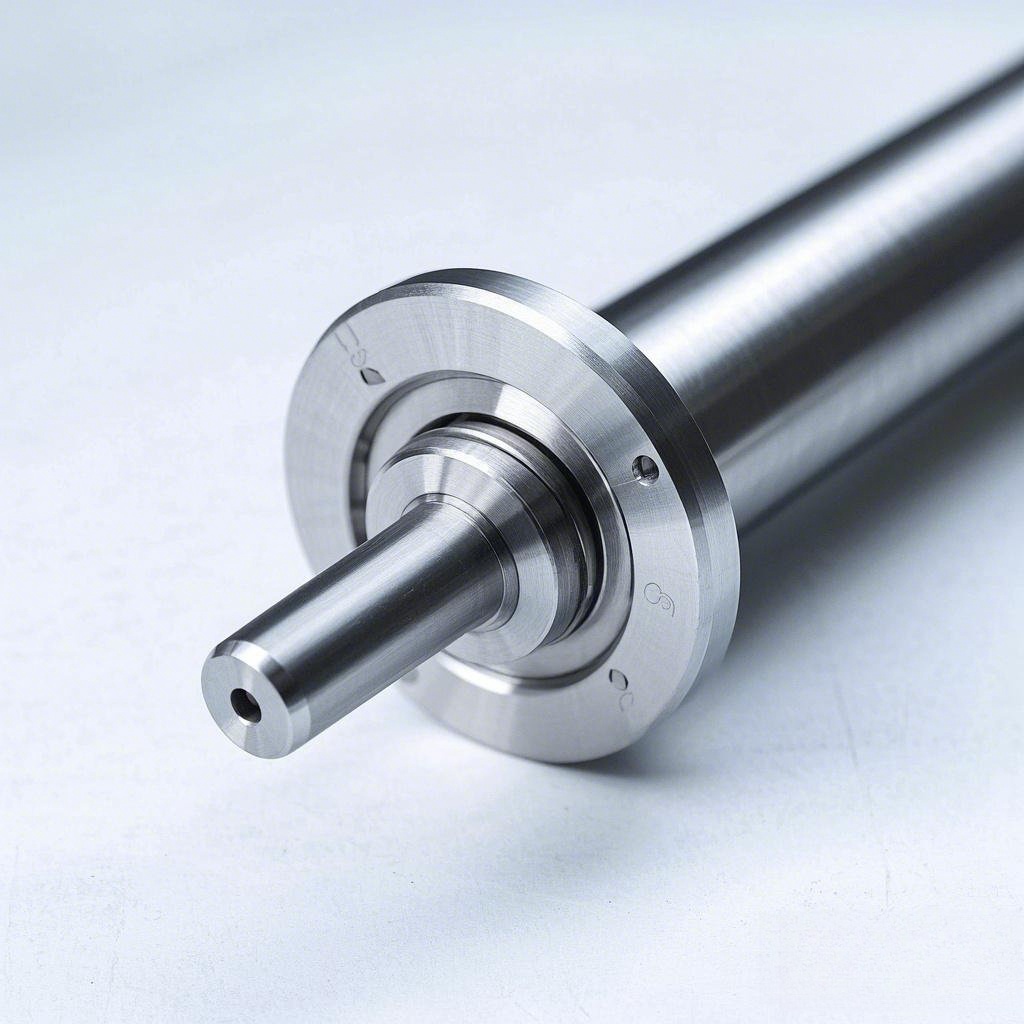What's Torsion Spring
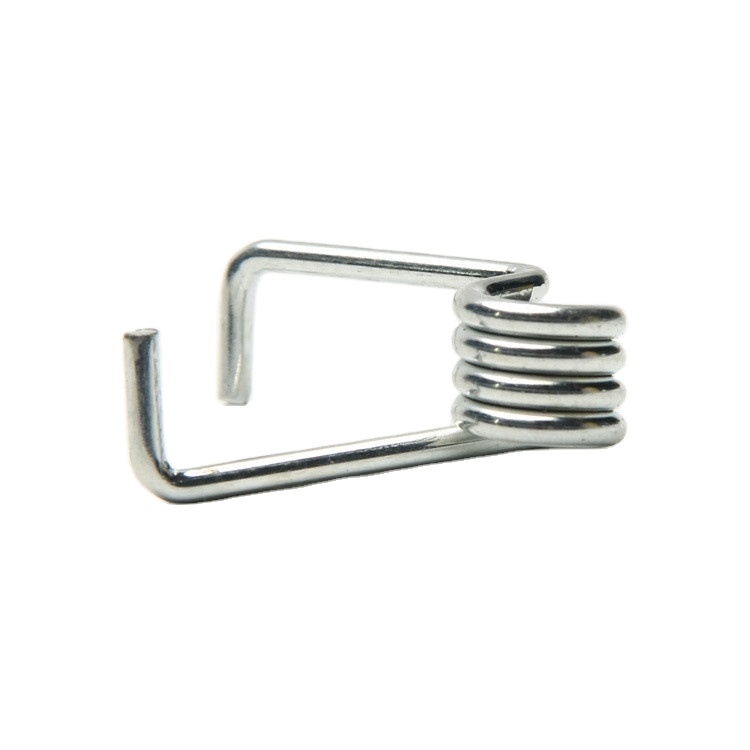
What's torsion Spring
A torsion spring is a type of mechanical spring that works by exerting torque or twisting force when it is twisted along its axis. The spring is made of wire that is wound in a spiral shape, with the ends of the wire attached to a stationary point on one end and a rotating point on the other end. When the rotating point is turned, the spring stores energy by twisting, and when the rotating force is released, the spring unwinds and releases the stored energy. Although the name implies otherwise, torsion springs are subjected to bending stress rather than torsional stress. They can store and release angular energy or statically hold a mechanism in place by deflecting the legs about the body centerline axis.
A torsion spring is normally close wound but can have a pitch to reduce friction between the coils. Torsion springs resist twisting or rotationally applied force. Depending on the application, a torsion spring can be designed to work in a clockwise or counterclockwise rotation, which will determine the direction of the wind.
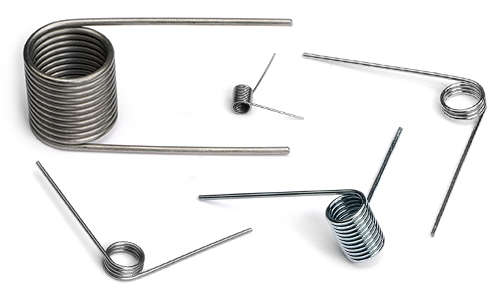
Torsion Spring Configurations
There are many options for torsion spring leg configuration so the torsion spring can be attached in different ways. Leg specifications to consider for a torsion spring include leg angle, leg length, and leg style. Springs that are straight or parallel on the same side are considered to have a 0º leg angle and the increasing angle is in the unwinding direction. Common torsion spring designs include straight torsion spring, straight offset torsion spring, hinged torsion spring, short hook end, and hook end designs. Torsion spring ends can be designed with custom bends, twists, hooked or looped end to suit your project needs. Lee Spring stock torsion springs are offered in a choice of 90 degree, 120 degree, 180 degree, 210 degree, 270 degree, 300 degree and 360 degree free leg position with straight legs. Custom double torsion springs consist of one set of coils coiled right hand and one set of coils coiled left hand. These coils are connected, usually with an unwound section between the winds and work in parallel. The sections are designed separately with the total torque being the sum of the two.
What is unique about Torsion Springs?
One of the unique features of a torsion spring is that it can store and release energy through twisting motion, as opposed to the more common compression and extension motion of other types of springs. This twisting motion allows the torsion spring to generate high torque or rotational force, making it well-suited for applications where a rotating force is required, such as in door hinges, garage doors, and various types of machinery.
Another unique aspect of torsion springs is that their properties can be adjusted by varying their design parameters, such as wire diameter, outer diameter, and number of coils. This makes them highly customizable and versatile, allowing them to be tailored to meet the specific requirements of different applications. Additionally, torsion springs are known for their high durability and long lifespan, due to their ability to withstand repeated twisting and untwisting without experiencing fatigue failure. This makes them a reliable and cost-effective choice for many industrial and consumer applications.
Torsion Spring Applications
Torsion springs are commonly used in a variety of applications, such as in door hinges, garage doors, levers, and various types of machinery. They are also used in toys, clocks, and other consumer products where a rotating force is required. Sizes range from miniature, used in electronic devices, to large torsion springs used in chair control units. Torsion springs can be made of various materials, including steel, stainless steel, and other alloys, depending on the specific application requirements. They are valued for their ability to provide high torque and for their durability and long lifespan.
Torsion Spring Terminology
Active Coils: The number of coils in the spring that are compressed or extended when it is under load.
Angular Deflection: The angle of rotation as measured from the free position to the installed, intermediate or final positions.
Free Angle: The angle between the arms of a torsion spring when the spring is in the unloaded position.
Inner diameter: The inner diameter of the spring, which is the diameter of the circle that the wire makes when the spring is not under any load.
Leg Length: The length of the straight sections at each end of the spring, which are used to attach the spring to other components.
Mandrel: A rod or shaft over which a torsion spring operates.
Material Type: The type of material used to make the spring, which can affect its strength, durability, and other properties.
Maximum Deflection: The maximum amount that the spring can be twisted before it reaches its elastic limit and starts to deform permanently.
Outer Diameter: The outer diameter of the spring, which is the diameter of the circle that the wire makes when it is wound into a spiral.
Radius: The bend radius at which a load is applied to a leg. The radius is usually assumed to be equal to ½ the leg length.
Spring Rate: The amount of torque that the spring exerts for a given angle of twist, which is usually measured in units of torque per unit of angle (such as Nm/degree or lb-in/radian).
Torque: A twisting action in torsion springs which produces rotation, equal to the load multiplied by the distance from the load to the axis of the spring body.
Total Coils: The number of coils in the spring when it is under no load.
Wire Diameter: The diameter of the wire used to make the spring, which is typically specified in inches or millimeters.
Custom Torsion Springs
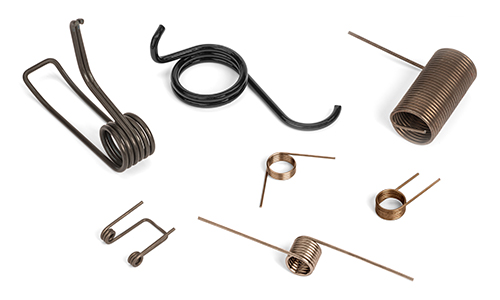
Hongyi can manufacture custom torsion springs to meet your exact specifications for all your projects. We offer experienced engineering support from design through production. Select from an extensive selection of material and finish options that will be ideal for your torsion spring design application. In addition, we can support your project with CAD assisted torsion spring design, governmental and industrial regulatory expertise, and prototypes through large production runs. Lee Spring offers advanced manufacturing capabilities and a wide variety of options for your torsion spring manufacturing needs such as; advance quality control systems, regulatory expertise including RoHS, REACH and DFARS, CAD assisted product design, in-house prototype production services and global supply chain network. Simply request a quote today or contact a Lee Spring Engineer for design assistance or to answer any questions to help start your custom spring project.
